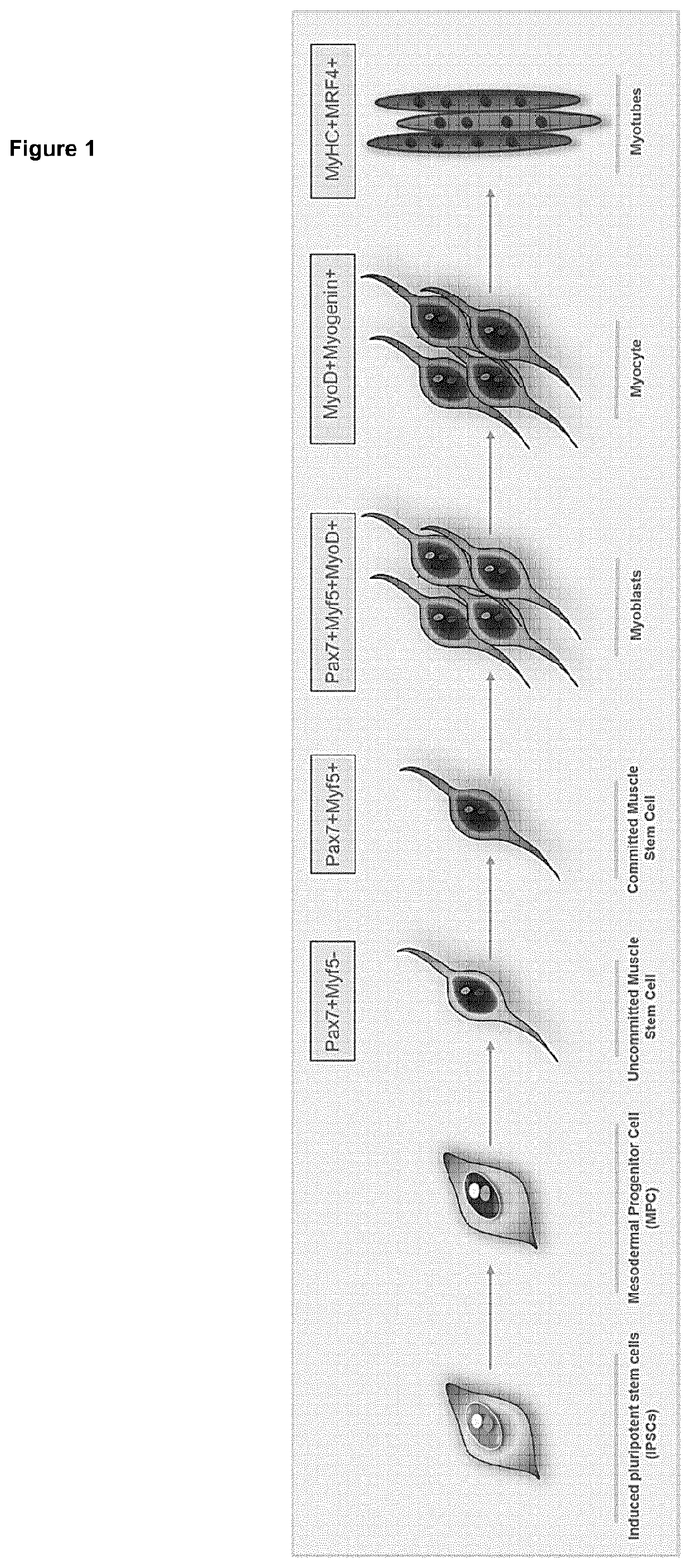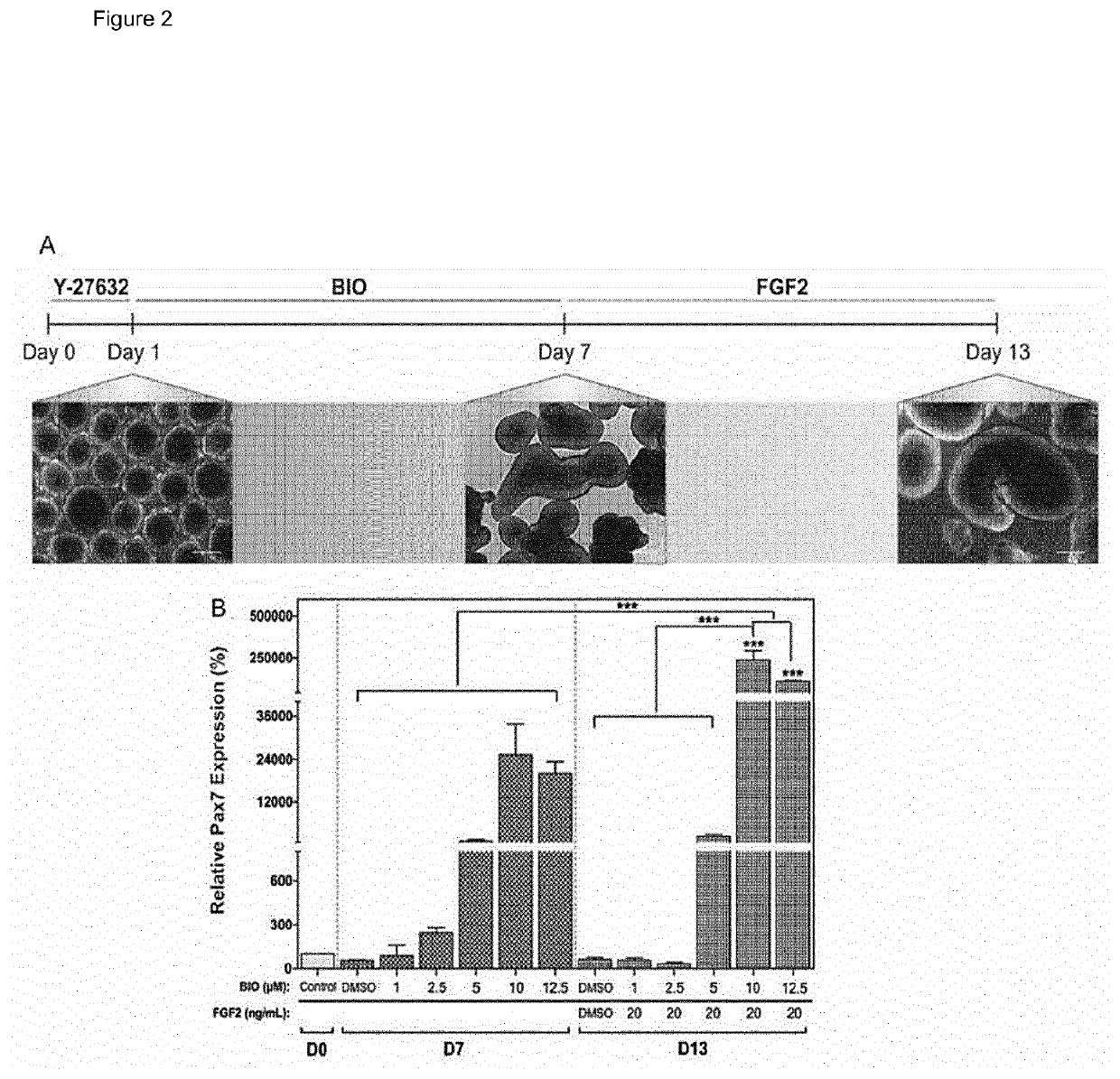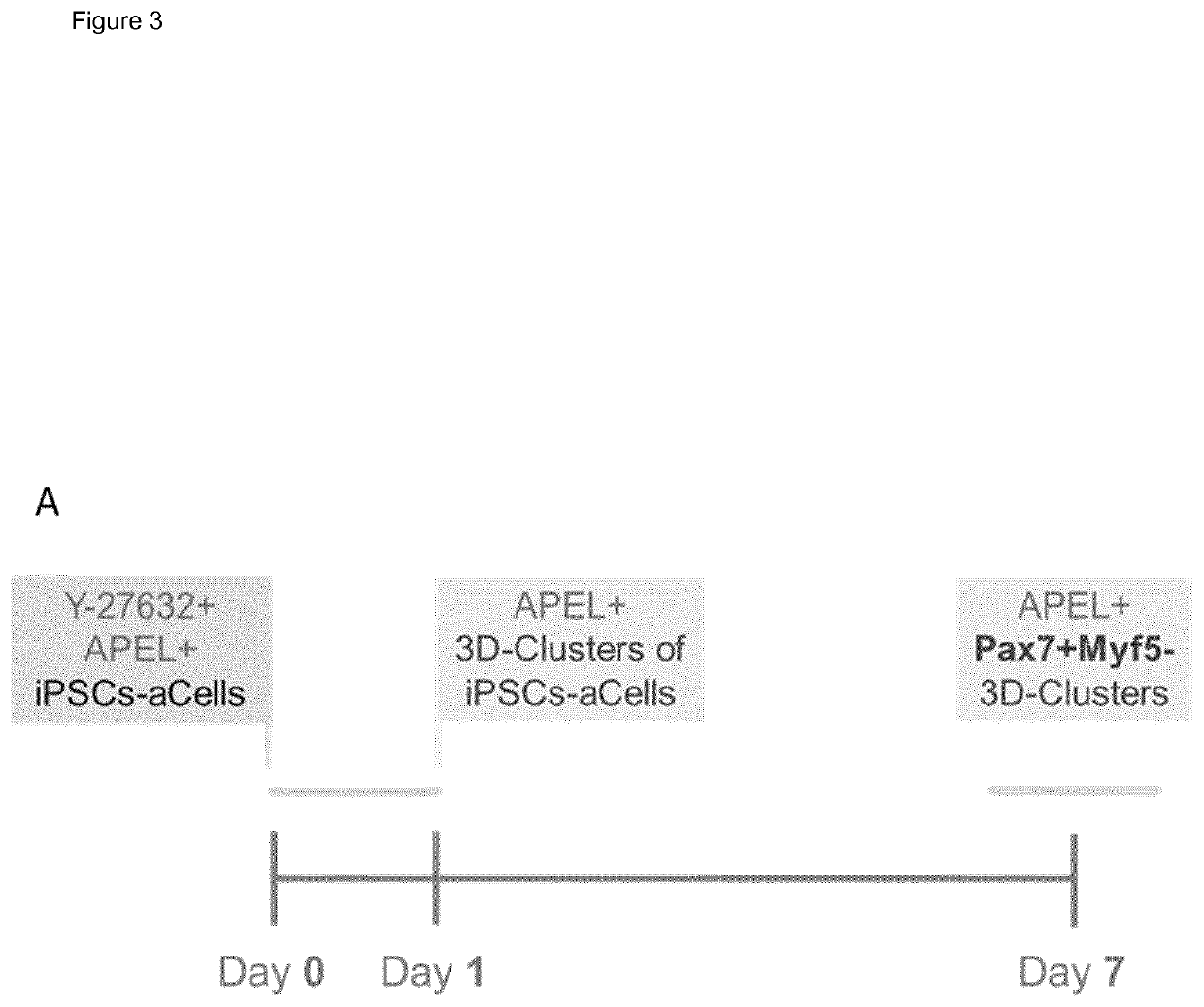In vitro production of muscle stem cells
a technology of muscle stem cells and in vitro production, which is applied in the field of in vitro methods of producing muscle stem cells, can solve the problems of poor patient compliance of exercise as a treatment, poor balance, poor gait speed, and people losing their ability to live independently
- Summary
- Abstract
- Description
- Claims
- Application Information
AI Technical Summary
Benefits of technology
Problems solved by technology
Method used
Image
Examples
example 1
[0240]In order to engineer a niche-mimicking 3D model that allows for the derivation of uncommitted muscle stem cells (MuSCs) from iPSCs, we developed a co-aggregation assay with different types of cells that would typically surround MuSCs during development or adulthood. These cell types include mouse embryonic fibroblasts (MEFs), mouse skeletal fibroblasts (NOR-10), 3T3 mouse fibroblasts, endothelial cells, mouse smooth muscle cells (MOVAS) and C2C12 mouse myoblasts.
[0241]Aggregates
[0242]Aggregates were prepared using ultra-low attachment plates on a planar shaker platform. We first decided to test a chemical protocol for the derivation of myogenic cells that has been established in 2D culture in our 3D aggregation system (Shelton, M. et al. (2014) Stem Cell Reports 3: 516-529) as outlined in FIG. 2A. Analysis by quantitative PCR (qPCR) showed significant upregulation of PAX7 with the chemical treatment (FIG. 2B). Thus, we were able to efficiently derive myogenic cells in our 3D s...
PUM
 Login to View More
Login to View More Abstract
Description
Claims
Application Information
 Login to View More
Login to View More - R&D
- Intellectual Property
- Life Sciences
- Materials
- Tech Scout
- Unparalleled Data Quality
- Higher Quality Content
- 60% Fewer Hallucinations
Browse by: Latest US Patents, China's latest patents, Technical Efficacy Thesaurus, Application Domain, Technology Topic, Popular Technical Reports.
© 2025 PatSnap. All rights reserved.Legal|Privacy policy|Modern Slavery Act Transparency Statement|Sitemap|About US| Contact US: help@patsnap.com



